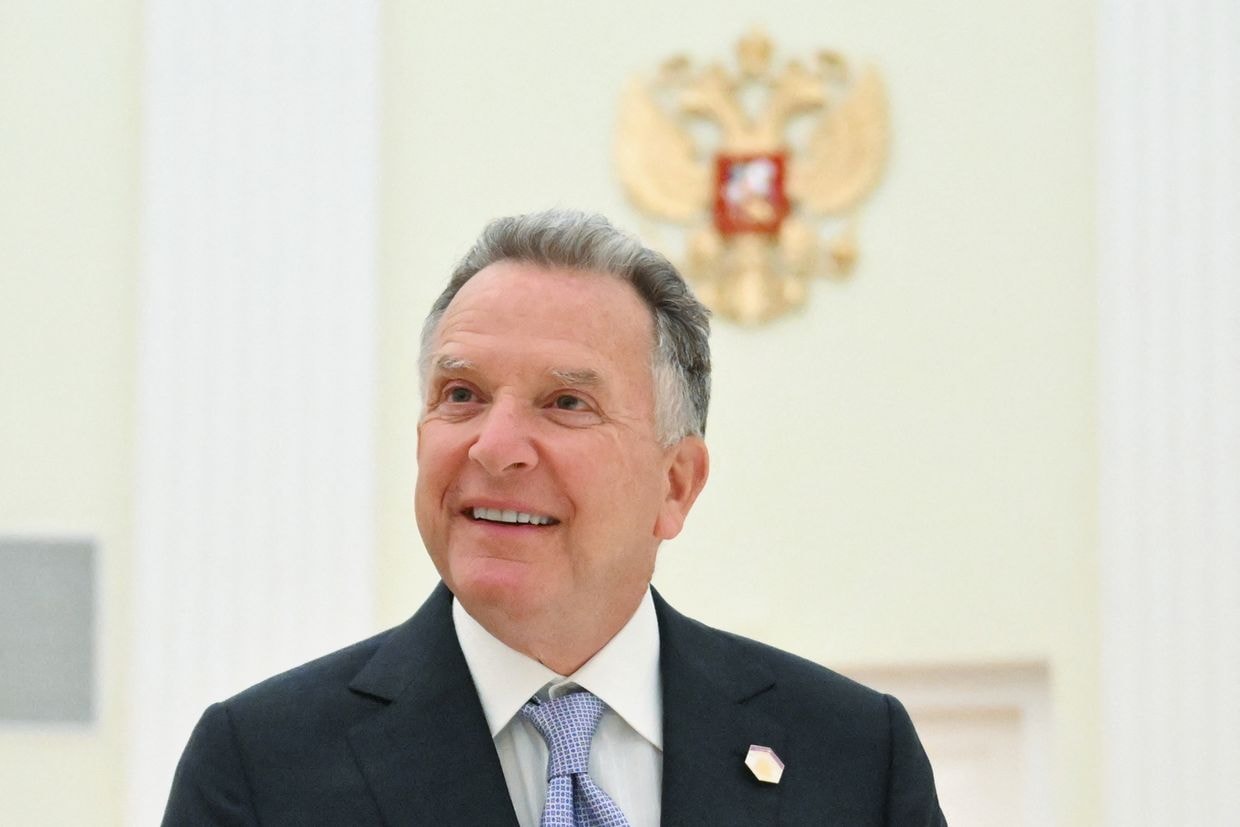
Splitting Europe's largest nuclear plant between Russia, Ukraine in peace deal won't work, experts say
A view of the Russian-occupied Zaporizhzhia Nuclear Power Plant in Zaporizhzhia Oblast, Ukraine, on June 15, 2023. (Olga Maltseva / AFP via Getty Images)
Restarting the Zaporizhzhia nuclear power plant under both Russian and Ukrainian control as part of any peace deal would be practically impossible in the plant’s current condition, several experts told the Kyiv Independent.
Under a 28-point peace proposal put forth by U.S. President Donald Trump's administration and leaked to the public last week, the plant would generate electricity equally for both countries with supervision from the U.N.’s International Atomic Energy Agency (IAEA).
It is unclear if a newer 19-point peace plan reportedly currently under discussion, contains the same clause. But IAEA chief Rafael Grossi on Nov. 25 appeared to endorse joint ownership of the plant, telling Reuters that "whatever side of the line it ends up, you will have to have a cooperative arrangement or a cooperative atmosphere."
The suggestion has raised eyebrows among the international energy community, with experts left wondering how such a plan would even be possible. The plant, under Russian occupation since March 2022, has been the source of nuclear anxiety in Ukraine and Europe. Experts told the Kyiv Independent the joint ownership could worsen the continent’s security situation.
"Maybe on paper you can develop a plan to split it, but practically it's not realistic," Jan Vande Putte, a nuclear expert for Greenpeace Ukraine, told the Kyiv Independent.
"It’s never been done before."
The plant, legally owned by Ukraine's state-enterprise Energoatom, would need complex modifications to split the power supply between two unsynchronized grids: the European grid, which Ukraine is connected to, and the Russian grid. The necessary changes would pose a security risk by destabilizing the electricity supply, said Vande Putte.

The proposal would also mean Ukraine partially gives in to Russia’s goal of illegally taking over the plant, the largest in Europe, for its own power grid. The plant is currently connected to Ukraine’s grid, but Russia has targeted power lines to sever the connection, causing a dangerous, more-than-120-hour blackout in September.
The plant lies in the partially occupied Zaporizhzhia Oblast, in southern Ukraine, across the Dnipro river from Ukrainian-controlled territory. If Washington’s peace plan is accepted, the current front lines would be frozen, putting the plant in Russian-controlled territory.
For now, the plant’s six reactors are shut down to prevent a nuclear meltdown and haven’t produced electricity since being occupied in March 2022. Several units were previously overhauled to take American Westinghouse fuel. If split between the two, four units would need to be adjusted back to Russian fuel, which could take years.
"It's not like switching from one gas station chain to another. It's a complicated process. It took engineers around 20 years to redesign the core so that it could use American fuel," Victoria Voytsitska, an energy expert and associate at We Build Ukraine, a think tank, told the Kyiv Independent.
Relaunching the plant would also require the reconstruction of the Kakhovka Dam by the nearby Kakhovka Reservoir, which provided the water for the plant’s cooling pools, Voytsitska added. Russia blew up the dam in June 2023, flooding nearby regions and killing hundreds of civilians.

With no alternative water supply nearby, Russians are drilling for wells close to the plant, putting its structural foundations in jeopardy, Voytsitska said. Rebuilding the dam is the only viable option, but there needs to be a security presence to ensure Russia doesn’t blow it up again if Moscow decides to wage another war, Voytsitska added.
The proposal does little to quell security fears. If Moscow does manage to restart the plant under a peace agreement and makes modifications to export the electricity to Russia, nothing is stopping them from breaking the agreement afterwards, Vande Putte said.
Vande Putte also raised concerns that Grossi had a bias toward Moscow, which would make the IAEA unlikely to be a dependable security presence. In September, Ukraine’s Foreign Ministry slammed Grossi’s visit to Russia to celebrate the 80th anniversary of its nuclear industry. The IAEA did not respond to the Kyiv Independent’s request for comment by the time of publication.
"Ideally, the IAEA's role should be to facilitate Ukraine's return to the plant, not to legitimize Russian occupation through 'supervised' power-sharing arrangements," Najmedin Meshkati, a professor at the University of Southern California, told the Kyiv Independent.
But Ukraine is stuck between a rock and a hard place. Russia is unlikely to willingly remove its troops from the plant. And a military operation to rid the plant of Russians could endanger the situation further.
As Kyiv and its allies consider various peace proposals, it’s unknown if the plant’s ownership will be mentioned in the final version. The Kyiv Independent reached out to Ukraine's Energy Ministry, asking if Kyiv would be willing to share the plant with Moscow, but did not receive a reply by publication time.
The Ukrainian parliament’s Energy Committee chief, Andrii Herus, said it was a "military and political" matter rather than an energy one. But he cautioned that many energy experts are suggesting ideas about the future of the plant without "knowing how to implement them."
The safest solution for Ukraine would be to keep the plant in a cold shutdown, when the reactor is not generating power, rather than starting it up again, said Voytsitska. This prevents a more dangerous hot shutdown, when the reactor still produces heat, and is more likely to cause a nuclear disaster.
"If the nuclear plant is under Russian control and it's operational, then it creates major issues for the security of the European continent overall," she said.
Yuliia Taradiuk contributed reporting to this article.









